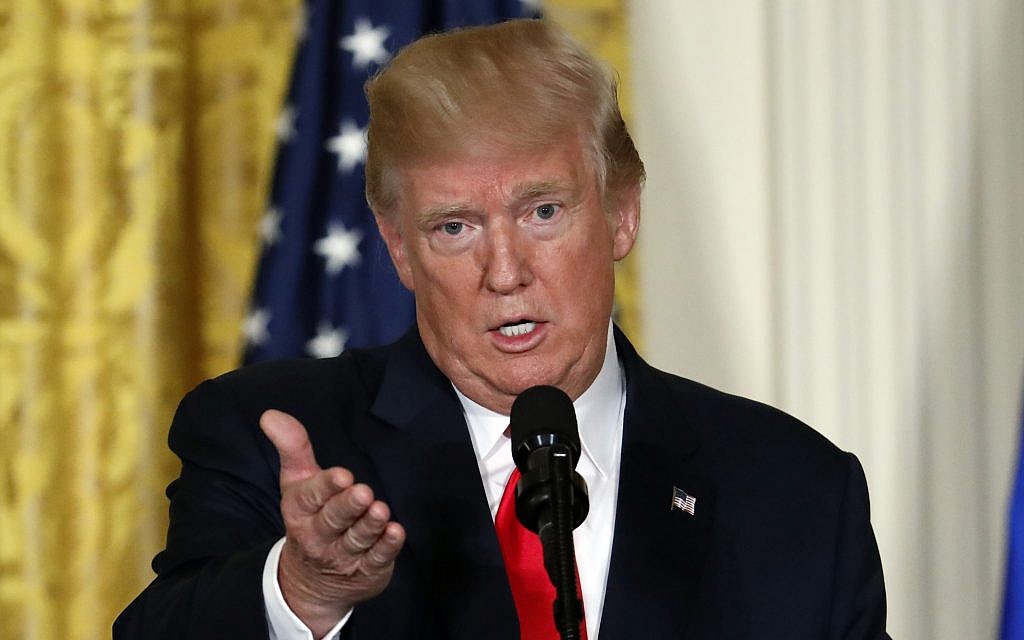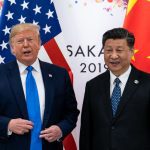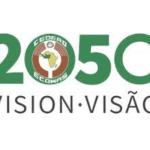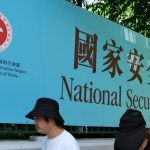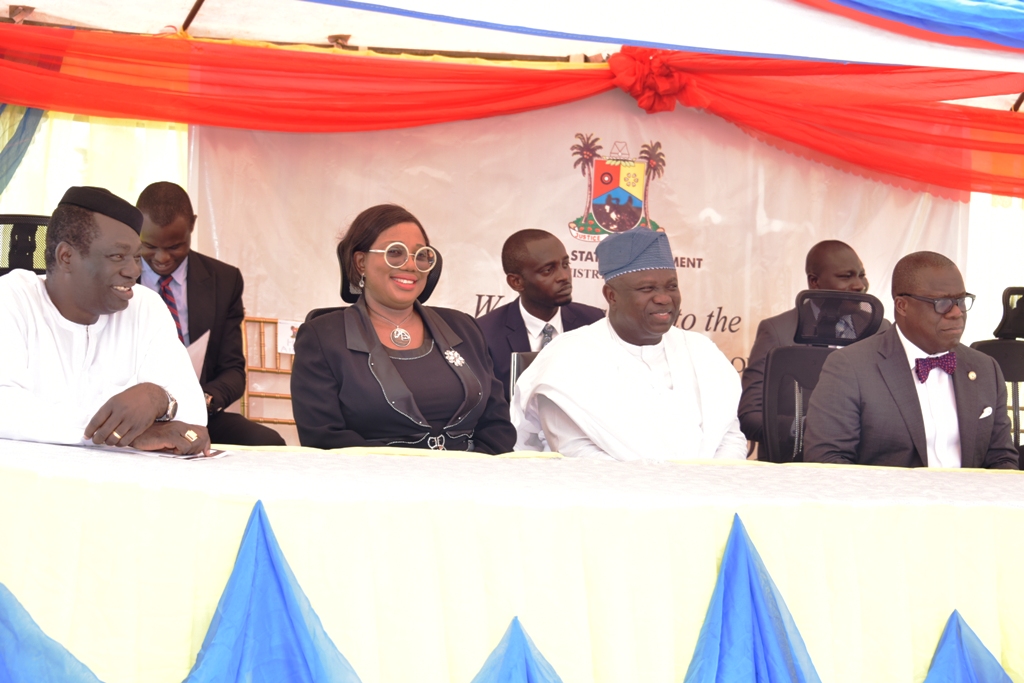U.S. President Donald Trump set out a strong message on trade at a meeting of Asia-Pacific countries in Vietnam on Friday, saying the United States could no longer tolerate chronic trade abuses and would insist on fair and equal policies.
Trump said the United States was ready to make a bilateral deal with any country in the Indo-Pacific region, but only on the basis of “mutual respect and mutual benefit”.
“When the United States enters into a trading relationship with other countries or other peoples, we will from now on expect that our partners will faithfully follow the rules,” he said in the seaside resort of Danang.
“We expect that markets will be open to an equal degree on both sides and that private investment, not government planners, will direct investment,” he said in a speech ahead of a summit of Asia-Pacific Economic Cooperation (APEC) leaders.
Trump arrived in Vietnam from China on the fourth leg of a 12-day trip to Asia. Redressing the balance of trade between Asia and the United States is at the center of Trump’s “America First” policy he says will protect U.S. workers.
While China has by far the biggest trade surplus with the United States, Vietnam is also on the list of those surpluses the Trump administration seeks to reduce.
APEC, which has long championed free trade, has itself been convulsed by the changes under Trump. U.S. President Donald Trump appears on a large video screen as he delivers remarks at the APEC CEO Summit in Danang, Vietnam November 10, 2017.
Since Trump abandoned the Trans Pacific Partnership (TPP) trade deal early in his presidency, the remaining 11 members have struggled to build momentum to keep it alive.
Leaders of TPP countries are due to meet on Friday after talks among ministers ended in confusion on Thursday with Japan’s economy minister saying that they “agree in principle” and his Canadian counterpart saying that was not true.
Although he was addressing a meeting alongside the summit of Asia-Pacific leaders, Trump repeatedly referred to the Indo-Pacific region and mentioned the importance of India in his speech.
Trump broke early with the “Pivot to Asia” of the Obama administration, worrying some traditional allies that he would allow China to extend its increasing dominance.
Danang itself sits on the shore of the South China Sea, one of the region’s biggest security challenges and where China’s neighbors challenge its sweeping claim to most of the waterway as having no basis in law.
U.S. President Donald Trump set out a strong message on trade at a meeting of Asia-Pacific countries in Vietnam on Friday, saying the United States could no longer tolerate chronic trade abuses and would insist on fair and equal policies.
Trump said the United States was ready to make a bilateral deal with any country in the Indo-Pacific region, but only on the basis of “mutual respect and mutual benefit”.
“When the United States enters into a trading relationship with other countries or other peoples, we will from now on expect that our partners will faithfully follow the rules,” he said in the seaside resort of Danang.
“We expect that markets will be open to an equal degree on both sides and that private investment, not government planners, will direct investment,” he said in a speech ahead of a summit of Asia-Pacific Economic Cooperation (APEC) leaders.
Trump arrived in Vietnam from China on the fourth leg of a 12-day trip to Asia. Redressing the balance of trade between Asia and the United States is at the center of Trump’s “America First” policy he says will protect U.S. workers.
While China has by far the biggest trade surplus with the United States, Vietnam is also on the list of those surpluses the Trump administration seeks to reduce.
APEC, which has long championed free trade, has itself been convulsed by the changes under Trump. U.S. President Donald Trump appears on a large video screen as he delivers remarks at the APEC CEO Summit in Danang, Vietnam November 10, 2017.
Since Trump abandoned the Trans Pacific Partnership (TPP) trade deal early in his presidency, the remaining 11 members have struggled to build momentum to keep it alive.
Leaders of TPP countries are due to meet on Friday after talks among ministers ended in confusion on Thursday with Japan’s economy minister saying that they “agree in principle” and his Canadian counterpart saying that was not true.
Although he was addressing a meeting alongside the summit of Asia-Pacific leaders, Trump repeatedly referred to the Indo-Pacific region and mentioned the importance of India in his speech.
Trump broke early with the “Pivot to Asia” of the Obama administration, worrying some traditional allies that he would allow China to extend its increasing dominance.
Danang itself sits on the shore of the South China Sea, one of the region’s biggest security challenges and where China’s neighbors challenge its sweeping claim to most of the waterway as having no basis in law.
U.S. President Donald Trump set out a strong message on trade at a meeting of Asia-Pacific countries in Vietnam on Friday, saying the United States could no longer tolerate chronic trade abuses and would insist on fair and equal policies.
Trump said the United States was ready to make a bilateral deal with any country in the Indo-Pacific region, but only on the basis of “mutual respect and mutual benefit”.
“When the United States enters into a trading relationship with other countries or other peoples, we will from now on expect that our partners will faithfully follow the rules,” he said in the seaside resort of Danang.
“We expect that markets will be open to an equal degree on both sides and that private investment, not government planners, will direct investment,” he said in a speech ahead of a summit of Asia-Pacific Economic Cooperation (APEC) leaders.
Trump arrived in Vietnam from China on the fourth leg of a 12-day trip to Asia. Redressing the balance of trade between Asia and the United States is at the center of Trump’s “America First” policy he says will protect U.S. workers.
While China has by far the biggest trade surplus with the United States, Vietnam is also on the list of those surpluses the Trump administration seeks to reduce.
APEC, which has long championed free trade, has itself been convulsed by the changes under Trump. U.S. President Donald Trump appears on a large video screen as he delivers remarks at the APEC CEO Summit in Danang, Vietnam November 10, 2017.
Since Trump abandoned the Trans Pacific Partnership (TPP) trade deal early in his presidency, the remaining 11 members have struggled to build momentum to keep it alive.
Leaders of TPP countries are due to meet on Friday after talks among ministers ended in confusion on Thursday with Japan’s economy minister saying that they “agree in principle” and his Canadian counterpart saying that was not true.
Although he was addressing a meeting alongside the summit of Asia-Pacific leaders, Trump repeatedly referred to the Indo-Pacific region and mentioned the importance of India in his speech.
Trump broke early with the “Pivot to Asia” of the Obama administration, worrying some traditional allies that he would allow China to extend its increasing dominance.
Danang itself sits on the shore of the South China Sea, one of the region’s biggest security challenges and where China’s neighbors challenge its sweeping claim to most of the waterway as having no basis in law.
U.S. President Donald Trump set out a strong message on trade at a meeting of Asia-Pacific countries in Vietnam on Friday, saying the United States could no longer tolerate chronic trade abuses and would insist on fair and equal policies.
Trump said the United States was ready to make a bilateral deal with any country in the Indo-Pacific region, but only on the basis of “mutual respect and mutual benefit”.
“When the United States enters into a trading relationship with other countries or other peoples, we will from now on expect that our partners will faithfully follow the rules,” he said in the seaside resort of Danang.
“We expect that markets will be open to an equal degree on both sides and that private investment, not government planners, will direct investment,” he said in a speech ahead of a summit of Asia-Pacific Economic Cooperation (APEC) leaders.
Trump arrived in Vietnam from China on the fourth leg of a 12-day trip to Asia. Redressing the balance of trade between Asia and the United States is at the center of Trump’s “America First” policy he says will protect U.S. workers.
While China has by far the biggest trade surplus with the United States, Vietnam is also on the list of those surpluses the Trump administration seeks to reduce.
APEC, which has long championed free trade, has itself been convulsed by the changes under Trump. U.S. President Donald Trump appears on a large video screen as he delivers remarks at the APEC CEO Summit in Danang, Vietnam November 10, 2017.
Since Trump abandoned the Trans Pacific Partnership (TPP) trade deal early in his presidency, the remaining 11 members have struggled to build momentum to keep it alive.
Leaders of TPP countries are due to meet on Friday after talks among ministers ended in confusion on Thursday with Japan’s economy minister saying that they “agree in principle” and his Canadian counterpart saying that was not true.
Although he was addressing a meeting alongside the summit of Asia-Pacific leaders, Trump repeatedly referred to the Indo-Pacific region and mentioned the importance of India in his speech.
Trump broke early with the “Pivot to Asia” of the Obama administration, worrying some traditional allies that he would allow China to extend its increasing dominance.
Danang itself sits on the shore of the South China Sea, one of the region’s biggest security challenges and where China’s neighbors challenge its sweeping claim to most of the waterway as having no basis in law.
U.S. President Donald Trump set out a strong message on trade at a meeting of Asia-Pacific countries in Vietnam on Friday, saying the United States could no longer tolerate chronic trade abuses and would insist on fair and equal policies.
Trump said the United States was ready to make a bilateral deal with any country in the Indo-Pacific region, but only on the basis of “mutual respect and mutual benefit”.
“When the United States enters into a trading relationship with other countries or other peoples, we will from now on expect that our partners will faithfully follow the rules,” he said in the seaside resort of Danang.
“We expect that markets will be open to an equal degree on both sides and that private investment, not government planners, will direct investment,” he said in a speech ahead of a summit of Asia-Pacific Economic Cooperation (APEC) leaders.
Trump arrived in Vietnam from China on the fourth leg of a 12-day trip to Asia. Redressing the balance of trade between Asia and the United States is at the center of Trump’s “America First” policy he says will protect U.S. workers.
While China has by far the biggest trade surplus with the United States, Vietnam is also on the list of those surpluses the Trump administration seeks to reduce.
APEC, which has long championed free trade, has itself been convulsed by the changes under Trump. U.S. President Donald Trump appears on a large video screen as he delivers remarks at the APEC CEO Summit in Danang, Vietnam November 10, 2017.
Since Trump abandoned the Trans Pacific Partnership (TPP) trade deal early in his presidency, the remaining 11 members have struggled to build momentum to keep it alive.
Leaders of TPP countries are due to meet on Friday after talks among ministers ended in confusion on Thursday with Japan’s economy minister saying that they “agree in principle” and his Canadian counterpart saying that was not true.
Although he was addressing a meeting alongside the summit of Asia-Pacific leaders, Trump repeatedly referred to the Indo-Pacific region and mentioned the importance of India in his speech.
Trump broke early with the “Pivot to Asia” of the Obama administration, worrying some traditional allies that he would allow China to extend its increasing dominance.
Danang itself sits on the shore of the South China Sea, one of the region’s biggest security challenges and where China’s neighbors challenge its sweeping claim to most of the waterway as having no basis in law.
U.S. President Donald Trump set out a strong message on trade at a meeting of Asia-Pacific countries in Vietnam on Friday, saying the United States could no longer tolerate chronic trade abuses and would insist on fair and equal policies.
Trump said the United States was ready to make a bilateral deal with any country in the Indo-Pacific region, but only on the basis of “mutual respect and mutual benefit”.
“When the United States enters into a trading relationship with other countries or other peoples, we will from now on expect that our partners will faithfully follow the rules,” he said in the seaside resort of Danang.
“We expect that markets will be open to an equal degree on both sides and that private investment, not government planners, will direct investment,” he said in a speech ahead of a summit of Asia-Pacific Economic Cooperation (APEC) leaders.
Trump arrived in Vietnam from China on the fourth leg of a 12-day trip to Asia. Redressing the balance of trade between Asia and the United States is at the center of Trump’s “America First” policy he says will protect U.S. workers.
While China has by far the biggest trade surplus with the United States, Vietnam is also on the list of those surpluses the Trump administration seeks to reduce.
APEC, which has long championed free trade, has itself been convulsed by the changes under Trump. U.S. President Donald Trump appears on a large video screen as he delivers remarks at the APEC CEO Summit in Danang, Vietnam November 10, 2017.
Since Trump abandoned the Trans Pacific Partnership (TPP) trade deal early in his presidency, the remaining 11 members have struggled to build momentum to keep it alive.
Leaders of TPP countries are due to meet on Friday after talks among ministers ended in confusion on Thursday with Japan’s economy minister saying that they “agree in principle” and his Canadian counterpart saying that was not true.
Although he was addressing a meeting alongside the summit of Asia-Pacific leaders, Trump repeatedly referred to the Indo-Pacific region and mentioned the importance of India in his speech.
Trump broke early with the “Pivot to Asia” of the Obama administration, worrying some traditional allies that he would allow China to extend its increasing dominance.
Danang itself sits on the shore of the South China Sea, one of the region’s biggest security challenges and where China’s neighbors challenge its sweeping claim to most of the waterway as having no basis in law.
U.S. President Donald Trump set out a strong message on trade at a meeting of Asia-Pacific countries in Vietnam on Friday, saying the United States could no longer tolerate chronic trade abuses and would insist on fair and equal policies.
Trump said the United States was ready to make a bilateral deal with any country in the Indo-Pacific region, but only on the basis of “mutual respect and mutual benefit”.
“When the United States enters into a trading relationship with other countries or other peoples, we will from now on expect that our partners will faithfully follow the rules,” he said in the seaside resort of Danang.
“We expect that markets will be open to an equal degree on both sides and that private investment, not government planners, will direct investment,” he said in a speech ahead of a summit of Asia-Pacific Economic Cooperation (APEC) leaders.
Trump arrived in Vietnam from China on the fourth leg of a 12-day trip to Asia. Redressing the balance of trade between Asia and the United States is at the center of Trump’s “America First” policy he says will protect U.S. workers.
While China has by far the biggest trade surplus with the United States, Vietnam is also on the list of those surpluses the Trump administration seeks to reduce.
APEC, which has long championed free trade, has itself been convulsed by the changes under Trump. U.S. President Donald Trump appears on a large video screen as he delivers remarks at the APEC CEO Summit in Danang, Vietnam November 10, 2017.
Since Trump abandoned the Trans Pacific Partnership (TPP) trade deal early in his presidency, the remaining 11 members have struggled to build momentum to keep it alive.
Leaders of TPP countries are due to meet on Friday after talks among ministers ended in confusion on Thursday with Japan’s economy minister saying that they “agree in principle” and his Canadian counterpart saying that was not true.
Although he was addressing a meeting alongside the summit of Asia-Pacific leaders, Trump repeatedly referred to the Indo-Pacific region and mentioned the importance of India in his speech.
Trump broke early with the “Pivot to Asia” of the Obama administration, worrying some traditional allies that he would allow China to extend its increasing dominance.
Danang itself sits on the shore of the South China Sea, one of the region’s biggest security challenges and where China’s neighbors challenge its sweeping claim to most of the waterway as having no basis in law.
U.S. President Donald Trump set out a strong message on trade at a meeting of Asia-Pacific countries in Vietnam on Friday, saying the United States could no longer tolerate chronic trade abuses and would insist on fair and equal policies.
Trump said the United States was ready to make a bilateral deal with any country in the Indo-Pacific region, but only on the basis of “mutual respect and mutual benefit”.
“When the United States enters into a trading relationship with other countries or other peoples, we will from now on expect that our partners will faithfully follow the rules,” he said in the seaside resort of Danang.
“We expect that markets will be open to an equal degree on both sides and that private investment, not government planners, will direct investment,” he said in a speech ahead of a summit of Asia-Pacific Economic Cooperation (APEC) leaders.
Trump arrived in Vietnam from China on the fourth leg of a 12-day trip to Asia. Redressing the balance of trade between Asia and the United States is at the center of Trump’s “America First” policy he says will protect U.S. workers.
While China has by far the biggest trade surplus with the United States, Vietnam is also on the list of those surpluses the Trump administration seeks to reduce.
APEC, which has long championed free trade, has itself been convulsed by the changes under Trump. U.S. President Donald Trump appears on a large video screen as he delivers remarks at the APEC CEO Summit in Danang, Vietnam November 10, 2017.
Since Trump abandoned the Trans Pacific Partnership (TPP) trade deal early in his presidency, the remaining 11 members have struggled to build momentum to keep it alive.
Leaders of TPP countries are due to meet on Friday after talks among ministers ended in confusion on Thursday with Japan’s economy minister saying that they “agree in principle” and his Canadian counterpart saying that was not true.
Although he was addressing a meeting alongside the summit of Asia-Pacific leaders, Trump repeatedly referred to the Indo-Pacific region and mentioned the importance of India in his speech.
Trump broke early with the “Pivot to Asia” of the Obama administration, worrying some traditional allies that he would allow China to extend its increasing dominance.
Danang itself sits on the shore of the South China Sea, one of the region’s biggest security challenges and where China’s neighbors challenge its sweeping claim to most of the waterway as having no basis in law.

